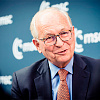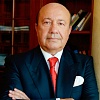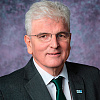The reality today is that we have entered a new era, in which a fateful error—triggered by an accident, miscalculation, or blunder—could trigger a nuclear catastrophe. The risks of such an error are compounded by heightened tensions between NATO and Russia—and little communication between their respective political and military leaders.
The Trump-Putin summit is an opportunity to stop this dangerous drift. Reaffirming that a nuclear war cannot be won and must never be fought, the United States and Russia could agree to specific steps at Helsinki to reduce nuclear risks.
First, begin discussions on how to increase decision time for leaders to reduce the risk of a false warning of a nuclear attack or a nuclear accident or miscalculation. Right now, both the US and Russian presidents may have only a few minutes to assess whether warning of a possible nuclear attack is real, and to decide whether to use nuclear weapons in response. Both the United States and Russia—and Europe—would be much safer if we could agree on steps to increase decision time to a few hours or a few days. A clear directive by the two presidents to their military leaders to work to develop options to achieve this goal would be a powerful signal to the American people, to the Russian people and to the world.
Second, begin discussions on reducing and managing cyber nuclear risks. The threat of a cyber intrusion to nuclear facilities, strategic warning systems, and nuclear command and control increases the probability of accidents, miscalculations, or blunders. Possible cyber-attacks leading to the theft of nuclear materials, nuclear sabotage, or false warning of a missile attack are the most frightening and potentially consequential aspect of the cyber threat. Developing clear “rules of the road” to reduce cyber nuclear risks is imperative.
Third, work jointly to restart bilateral crisis management dialogue, including among uniformed military leaders in charge of nuclear forces, and multilateral crisis management dialogue throughout the Euro-Atlantic region, to reduce military risks. Continuing curtailment of military-to-military and crisis management dialogue increases the risk of the ultimate “lose-lose” scenario: a military conflict. We must work together, including our militaries, to increase transparency and trust.
Fourth, work jointly to preserve and extend existing agreements and treaties, including the Intermediate-Range Nuclear Forces (INF) Treaty and New START Treaty. These two agreements are crucial to sustaining transparency and predictability. In the absence of these agreements, there will be no regulations on nuclear forces, exacerbating today’s already high risks.
Fifth, continue consultations relating to concluding practical arrangements for the full and expeditious implementation of the commitments in the Singapore Summit Joint Statement. The complete and verifiable denuclearization of the Korean peninsula is an obvious area for the United States and Russia to pool their experience and collaborate in reducing global nuclear risks.

Presidents Trump and Putin will finally meet next week in Helsinki for a bilateral summit. Throughout the Cold War, summits between US and Soviet leaders were overwhelmingly welcomed in both countries and the world as an opportunity to reduce tensions. After the Cold War, these meetings became routine. Today, the scheduling of the Trump-Putin summit has proven controversial across the Euro-Atlantic region. Yet it is our region that stands to benefit the most from renewed dialogue between Presidents Trump and Putin—and leaders across Europe—particularly if it is focused on cooperation in areas of existential common interest.
Reducing and eliminating nuclear and other military risks is a vital common interest for all nations—especially in an era of destabilization, where serious political differences, new military technologies, and a breakdown in arms control could trigger a nuclear catastrophe. The United States and the Russian Federation have a shared responsibility to work together along with other nations to clarify our differences and mitigate these risks. Progress can only be made through the engagement of leaders. Moreover, in every country that possesses nuclear weapons, anything relating to nuclear policy is inherently “presidential.”
The reality today is that we have entered a new era, in which a fateful error—triggered by an accident, miscalculation, or blunder—could trigger a nuclear catastrophe. The risks of such an error are compounded by heightened tensions between NATO and Russia—and little communication between their respective political and military leaders.
The Trump-Putin summit is an opportunity to stop this dangerous drift. Reaffirming that a nuclear war cannot be won and must never be fought, the United States and Russia could agree to specific steps at Helsinki to reduce nuclear risks.
First, begin discussions on how to increase decision time for leaders to reduce the risk of a false warning of a nuclear attack or a nuclear accident or miscalculation. Right now, both the US and Russian presidents may have only a few minutes to assess whether warning of a possible nuclear attack is real, and to decide whether to use nuclear weapons in response. Both the United States and Russia—and Europe—would be much safer if we could agree on steps to increase decision time to a few hours or a few days. A clear directive by the two presidents to their military leaders to work to develop options to achieve this goal would be a powerful signal to the American people, to the Russian people and to the world.
Second, begin discussions on reducing and managing cyber nuclear risks. The threat of a cyber intrusion to nuclear facilities, strategic warning systems, and nuclear command and control increases the probability of accidents, miscalculations, or blunders. Possible cyber-attacks leading to the theft of nuclear materials, nuclear sabotage, or false warning of a missile attack are the most frightening and potentially consequential aspect of the cyber threat. Developing clear “rules of the road” to reduce cyber nuclear risks is imperative.
Third, work jointly to restart bilateral crisis management dialogue, including among uniformed military leaders in charge of nuclear forces, and multilateral crisis management dialogue throughout the Euro-Atlantic region, to reduce military risks. Continuing curtailment of military-to-military and crisis management dialogue increases the risk of the ultimate “lose-lose” scenario: a military conflict. We must work together, including our militaries, to increase transparency and trust.
Fourth, work jointly to preserve and extend existing agreements and treaties, including the Intermediate-Range Nuclear Forces (INF) Treaty and New START Treaty. These two agreements are crucial to sustaining transparency and predictability. In the absence of these agreements, there will be no regulations on nuclear forces, exacerbating today’s already high risks.
Fifth, continue consultations relating to concluding practical arrangements for the full and expeditious implementation of the commitments in the Singapore Summit Joint Statement. The complete and verifiable denuclearization of the Korean peninsula is an obvious area for the United States and Russia to pool their experience and collaborate in reducing global nuclear risks.
These five steps taken by Presidents Trump and Putin at Helsinki would be a bold initiative that citizens across the Euro-Atlantic region would understand and embrace—and would vividly underscore that reducing nuclear risks is an existential common interest we share. This summit is the right place to start.
Des Browne, a former British defense secretary, is Vice Chairman of the Nuclear Threat Initiative and Chair of the European Leadership Network.
Wolfgang Ischinger, former German Ambassador to the United States, is Chairman of the Munich Security Conference and Professor for Security Policy and Diplomatic Practice at the Hertie School of Governance in Berlin.
Igor S. Ivanov, former Russian Foreign Minister and Secretary of the Security Council of the Russian Federation from 2004 to 2007, is President of the Russian International Affairs Council.
Sam Nunn, a former Democratic US senator, is Co-Chairman of the Nuclear Threat Initiative.








